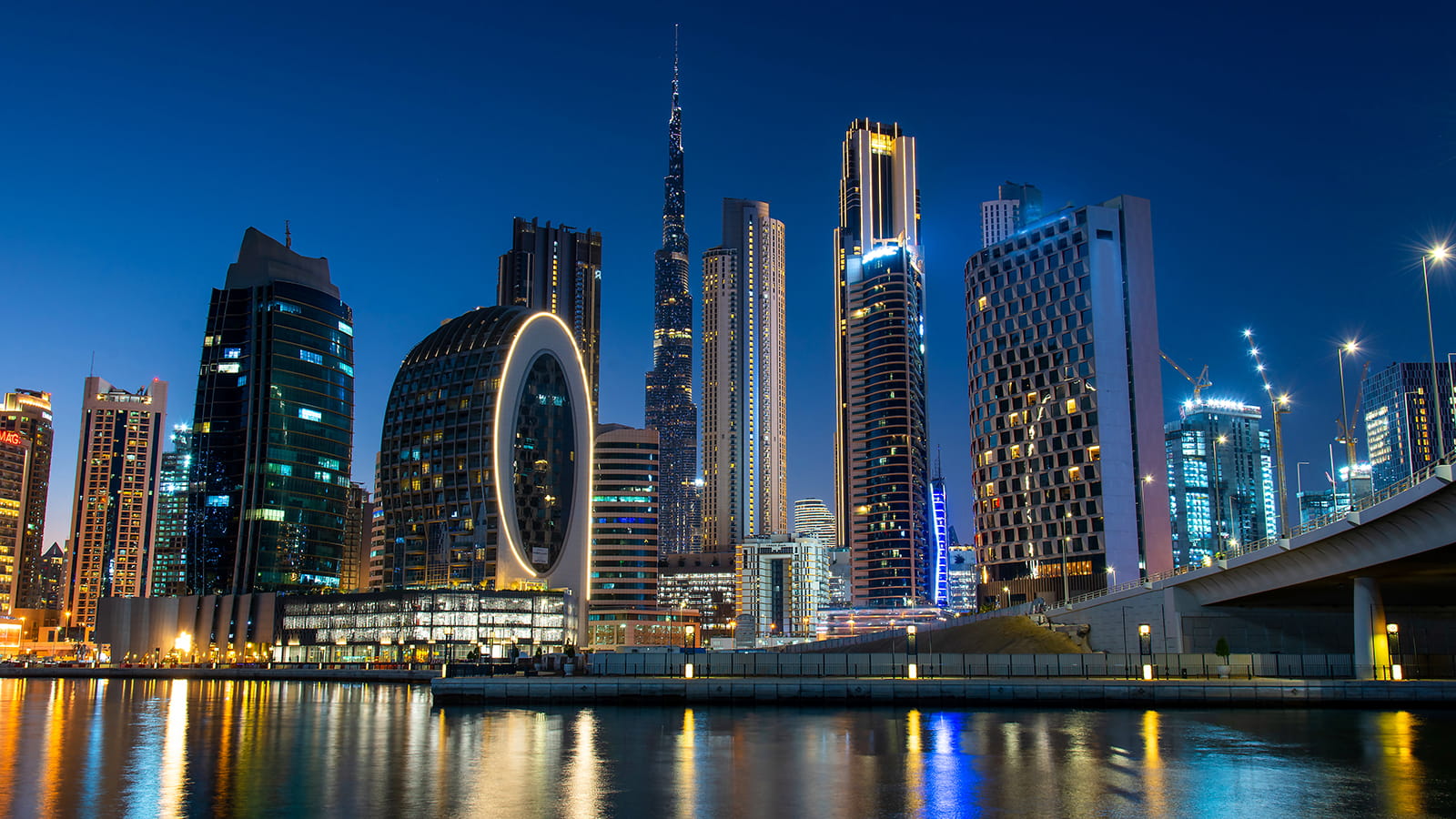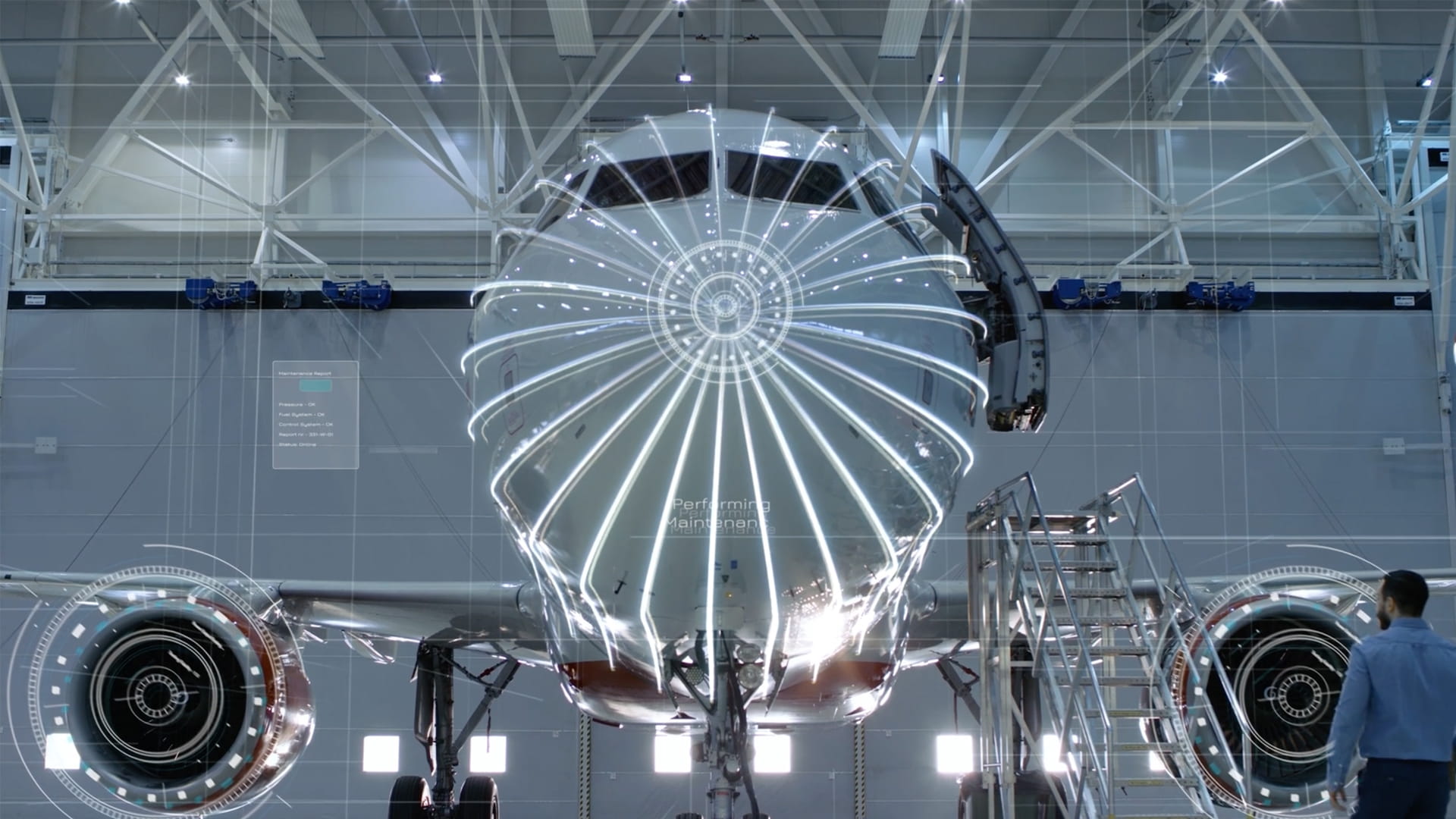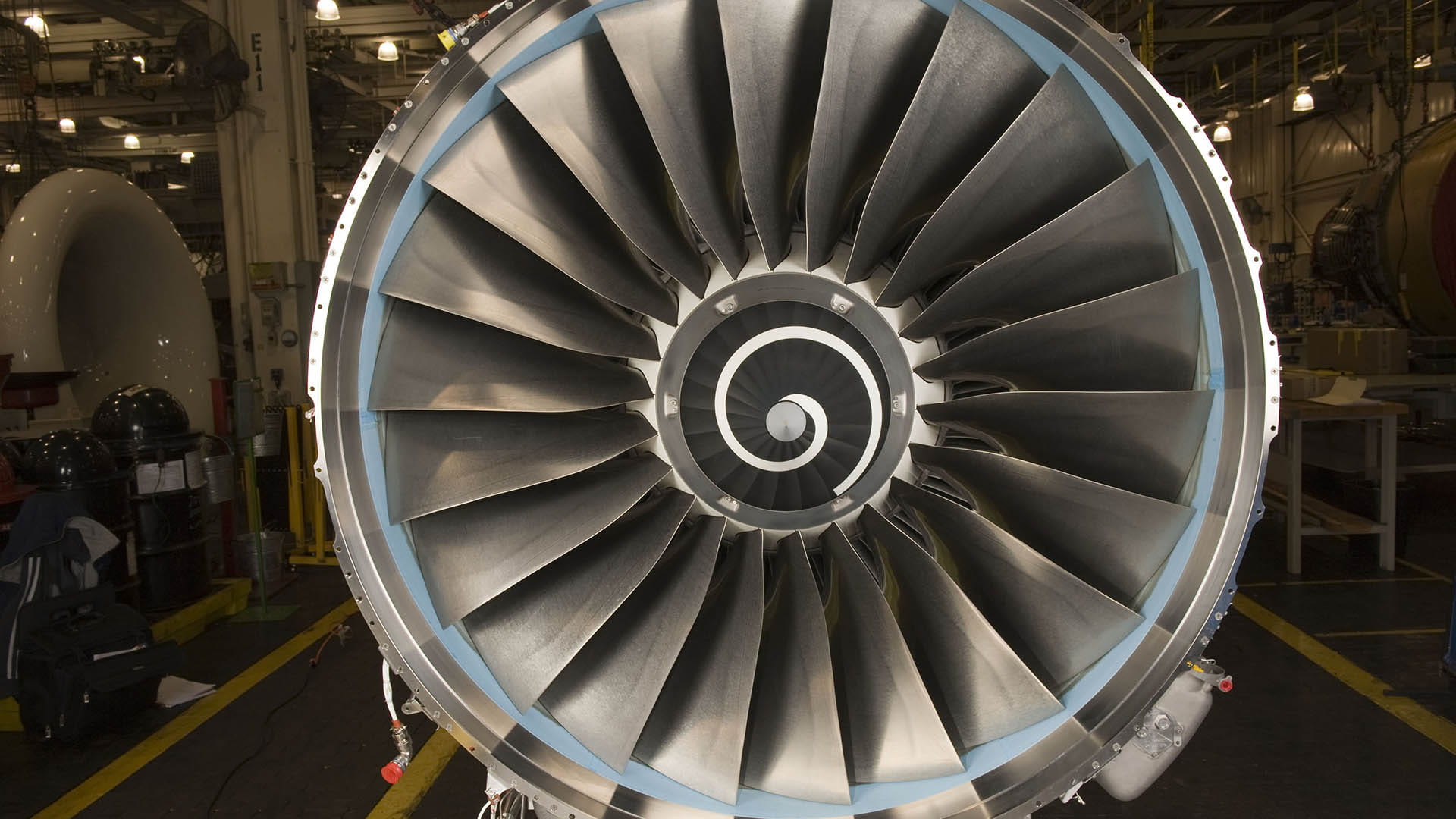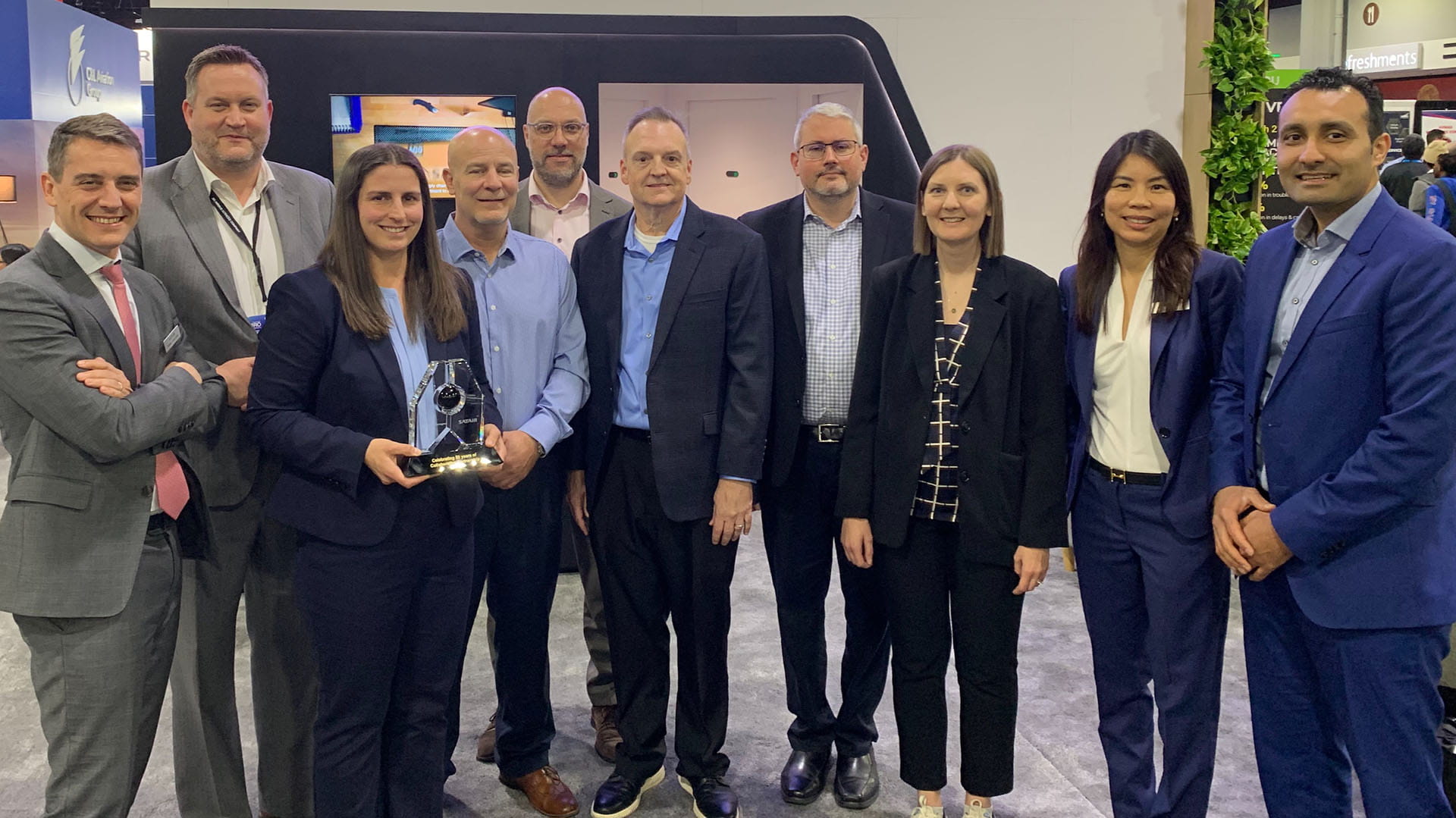A connected vision in the United Arab Emirates
Responsibility. Destiny. Knowledge. Prosperity.
These are the four pillars of the United Arab Emirates’ vision for the country over the next 50 years. Raytheon Technologies, a longtime regional partner, supports that vision through a strong presence in-country, a commitment to developing the local defense industry, initiatives to inspire a new generation of innovators and a focus on a more sustainable future.
Raytheon Technologies’ relationship with the UAE dates back more than 30 years. That relationship entered a new phase in 2017 with the establishment of Raytheon Emirates, a local company based in Abu Dhabi.
“The landed company enables indigenous capability and technology in the UAE’s aerospace and defense sector,” said Alan Davis, chief executive for Raytheon Emirates. “Not only have we been able to build partnerships and develop business within this community, but more importantly, we’re committed to helping the UAE create a strong aerospace and defense industry, and we are developing the next generation of Emirati knowledge base leaders while enabling a more sustainable future.”
Now, with its broad portfolio of aerospace and defense technology businesses under the Raytheon Technologies umbrella, the company has facilities in Abu Dhabi, Dubai, and Jebel Ali Free Zone and continues to establish deeper roots within the community.
“The Middle East has been a high-growth region for us, and now, with the added capabilities we bring to customers as part of Raytheon Technologies, that commitment is growing even stronger,” said Talel Kamel, vice president of international business development for customer and account management at Collins Aerospace, a Raytheon Technologies business.
Not only does Raytheon Technologies support jobs and growth within the region, but the employees and their families have quickly become a part of the community.
“We are embedded here in the UAE. We are a part of the community and culture in Abu Dhabi, and more importantly, we are a part of their vision in developing new technologies and capabilities that are in alignment with their future goals,” Davis said.
Connected partners
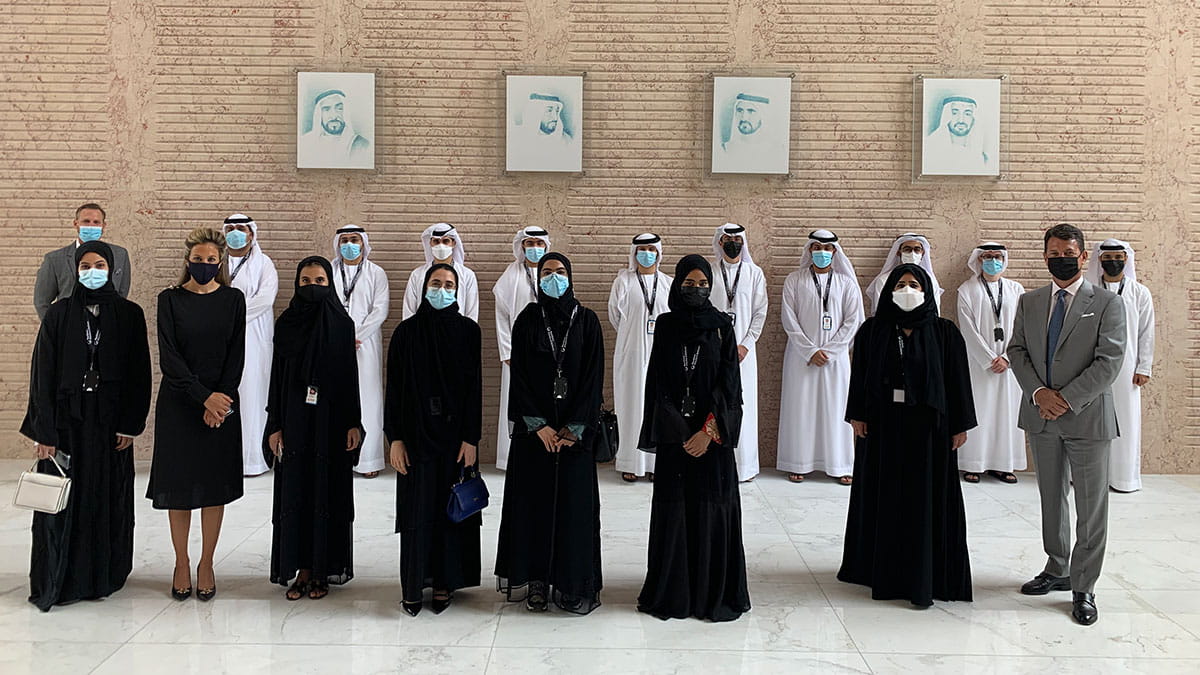
Raytheon Emirates' annual internship program supports the United Arab Emirates’ vision to develop highly skilled Emirati talent.
Support of the local economy has been a cornerstone of Raytheon Emirates’ presence in the UAE. Specifically, Davis said, Raytheon Technologies has many partnerships and memorandums of agreement and understanding to work with emerging companies in the region.
“The UAE’s success had been built around diverse and inclusive culture and the ability to pull people and innovative ideas from different backgrounds. Leveraging those capabilities and technologies that this diverse population brings has been an accelerant for advancements in many sectors of the economy,” Davis said.
Working with partners such as Abu Dhabi Ship Building, Raytheon Technologies has taken indigenous systems that have been designed and developed in the UAE and integrated them with Raytheon Technologies products such as the Rolling Airframe Missile and Evolved Sea Sparrow Missile on the Baynunah-class corvette to support the UAE Navy. The company has also integrated the Rolling Airframe Missile onto the Arialah-class offshore patrol vessel for the UAE’s Critical Infrastructure and Coastal Protection Authority.
These partnerships also extend into the community with relationships at local universities.
“In an effort to develop the next-generation knowledge base, we now run a very robust intern program here in the UAE,” Davis said.
In 2021, the company hosted 18 Emirati interns from local universities, offering them experience in defense, cybersecurity, finance and commercial aviation.
Connected battlespace

The Early Warning Radar provides unmatched range – up to 5,000km – for simultaneous ballistic missile defense and space surveillance.
The United States and the UAE, along with other partners, are working toward a common goal of stability, security and prosperity in the Middle East. The UAE seeks to strengthen border and maritime security, air and missile defense, cybersecurity and counterterrorism in today’s connected modern battlespace.
“The UAE is located strategically within this region, and they have a very deep passion around providing a safe and secure community for their country,” Davis said. “As a strategic partner, we have a responsibility to offer systems and solutions that provide for that safe and secure regional stability and environment.”
Among those systems, Davis said, are technologies that serve multiple purposes in the connected battlespace. They include the company’s Early Warning Radar, its combat management systems for ship self-defense, and its air dominance technologies – all of which have multiple uses in air and ground domains. That creates efficiencies that work to the advantage of small nations like the UAE.
“One of our fundamental goals is to help with the advancement of those technologies and capabilities so that the Emiratis can advance their own knowledge base and provide solutions for their own sovereignty,” Davis said.
Raytheon Technologies offers technologies and capabilities to advance the UAE military, including:
- Integrated air and missile defense.
- Counter-UAS capabilities.
- Command and control.
- Communications.
- Intelligence systems.
- A broad range of mission systems integrations for the connected battlespace.
Connected aviation
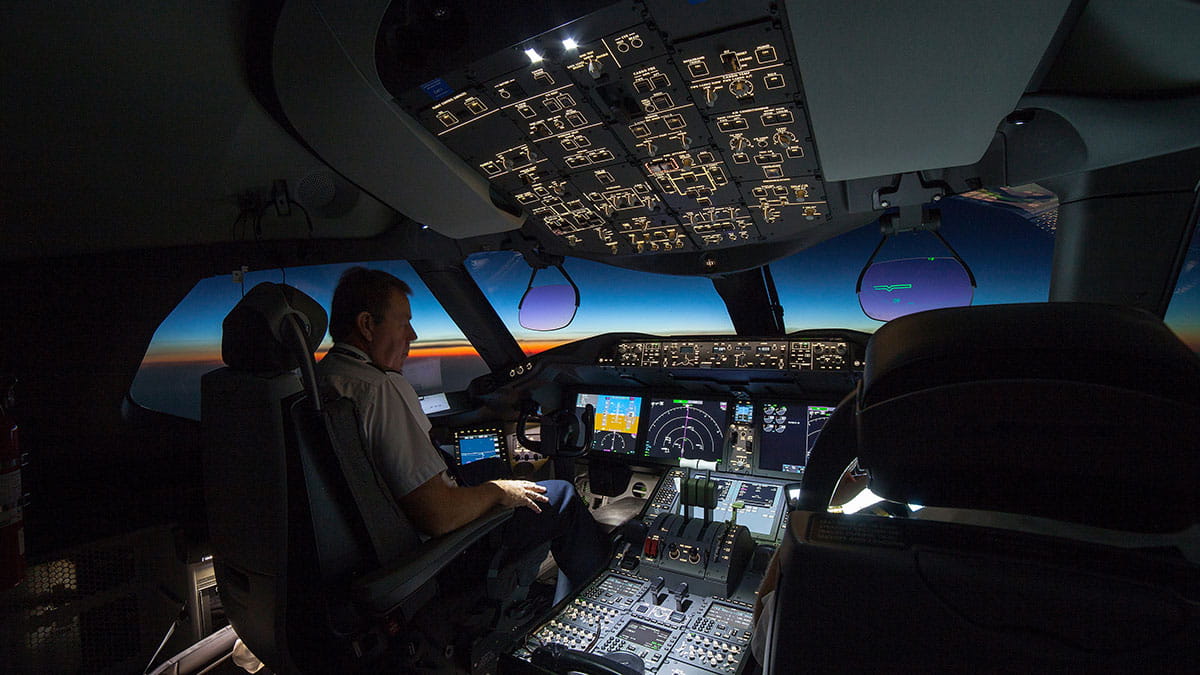
Collins Aerospace provides a range of avionics to enable guidance systems and flight deck connectivity, as shown here on a Boeing 787 Dreamliner.
The commercial aviation sector, prior to the global pandemic, showed remarkable growth in the UAE and was a significant economic driver in the region. Customers relied on Collins Aerospace and its heritage companies to provide aircraft sensors, flight connectivity solutions, repair and maintenance services and a range of products such as seats, cabin lighting and galley inserts, to equip the interior of commercial aircraft. In addition, Pratt & Whitney, another Raytheon Technologies business, has been a longtime manufacturer and supplier of aircraft engines for commercial and military fleets in the region.
While both businesses remain committed to these core offerings, each is driving innovation to help customers solve challenges amplified by the pandemic.
To aid in the industry’s recovery, airlines, airports and aviation companies are investing in new technologies to enhance the safety and health of passengers. Implementing touchless and mobile technologies will create a contactless passenger journey from entry to boarding and departure, which in turn will boost passenger confidence.
“Digital solutions that can improve airport and aircraft operations across the ecosystem are a key area of focus for us,” said Kamel, pointing to Collins’ ongoing initiative to redefine air travel. “Whether that’s related to touchless check-in or biometrics technologies like the systems in place at Dubai International Airport, or advancements in the communications and connectivity of aircraft, our goal is to offer a more consistent, seamless travel experience both on and off the aircraft.”
With an eye on the industry’s recovery, Collins Aerospace and Pratt & Whitney are also focused on supporting the sustainability goals for the sector.
“We are very proud of our current footprint in the region, which includes more than 1500 engines in service with airlines, charter operators, security and defense contractors and proud pilot/owners,” said Irene Makris, vice president of the global sales and marketing organization for Pratt & Whitney Canada, which produces engines for aircraft common in the region. “Pratt & Whitney also powers aircraft for more than half a dozen military customers in the region on four key tactical and mobility platforms.”
The business will continue to support large airlines with large fleets by providing sustainable products that help the region meet its goals. The UAE has set a goal to achieve net-zero carbon emissions by 2050, becoming the first nation in the Middle East and North Africa region to do so. The sustainability effort has in part driven demand for regional turboprops, regional jets and commercial aircraft, Makris said.
Pratt & Whitney, which powers the A320neo family of aircraft, has made significant strides in helping the region achieve its sustainability goals. The GTF engine produces 16% better fuel efficiency, 50% less regulated emissions and a 75% smaller noise footprint. And regional turboprops are already 25% to 40% more fuel efficient than similar jet-powered aircraft. In addition, all Pratt & Whitney engines are currently compatible with a 50% sustainable aviation fuel blend, and the company is working on a validation program to analyze and test its engines for SAF compatibility at blends up to 100%.
“We are also helping our customers comply with sustainability efforts through Pratt & Whitney Canada’s Carbon Offset Service, designed to improve the fuel burn of our existing portfolio,” Makris said. “Pratt & Whitney Canada was the first engine OEM (original equipment manufacturer) to offer this program, designed to help even smaller aviation companies compensate for their carbon footprint.”
Collins Aerospace and Pratt & Whitney recently joined other aviation companies in support of the Air Transport Action Group’s commitment to eliminate carbon emissions entirely. Both are actively pursuing alternative power sources for aircraft, including more electric and hybrid-electric flight.

